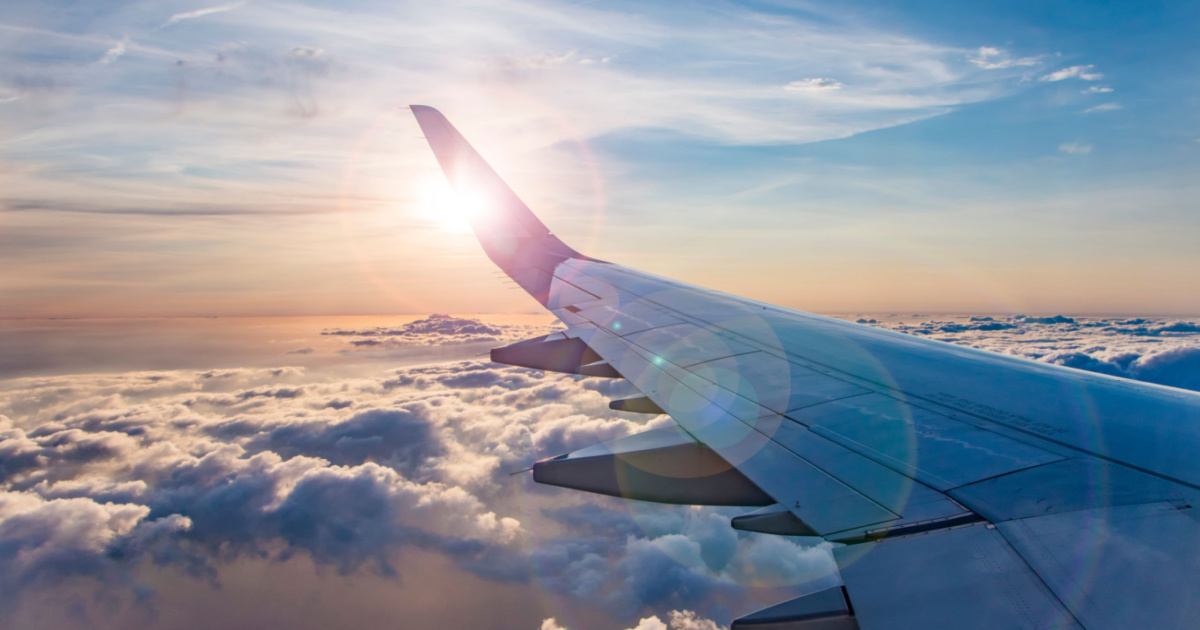The Impact of 5G on the Skies

If you use wireless services, you’re most likely experiencing the amazing benefits of the new 5G frequency. But were you aware of the impact that 5G is having on the aviation industry?
On January 19, 2022, the United States launched 5G services in 46 markets that use frequencies in a radio spectrum called the “C-band.” Since this rollout, there’s been widespread concern in the aviation industry that these frequencies could interfere with the aircraft’s radio altimeter, which is an important piece of equipment that can help serve as the pilot’s eyes on takeoff and landing. So, how is the Federal Aviation Administration (FAA) keeping the skies safe through it all? We take a deep dive into this important topic, so you know what to expect if you’re traveling this summer.
What is 5G technology?
Essentially, 5G technology is the fifth generation of mobile networks that is now considered the global standard. With unprecedented speed and higher bandwidth, 5G is transforming the way we communicate by adding higher flexibility and scalability. Why then is this affecting the aviation industry? The answer lies not with 5G technology itself, but the spectrum it is being used on; specifically, the C-band, which is deployed at a frequency band of 3.7-3.98 GHz.
How is 5G posing a disruption risk to aviation?
According to the FAA, the frequencies in the radio spectrum of the C-band can be “close to those used by radio altimeters.” This vicinity is causing interference issues with the radio altimeter radar. To mitigate this potentially hazardous interference, the FAA issued an airworthiness directive (AD): “…revising the landing requirements of certain Boeing 737 aircraft where 5G interference could occur.” According to the agency, this specific series of aircraft relies on the radio altimeter, including auto throttle, ground proximity warning, thrust reversers and Traffic Collision Avoidance System.
It’s important to note that the AD does not apply to landings at airports where:
- The FAA determined the aircraft radio altimeters are safe and reliable
- 5G isn’t deployed
Other safety restrictions the FAA has imposed to mitigate the interference issues include:
- Ensuring radio altimeters are accurate and reliable
- Imposing restrictions on flight operations that use certain types of radio altimeter equipment that are close to antennas in 5G networks
In order to understand the impact this might have on flights, it’s important to understand the function of a radio altimeter.
Here is what radio altimeters do:
- Provide highly accurate information about an aircraft’s height above the ground
- Relays data to other safety equipment on the plane, including navigation instruments, terrain awareness and collision-avoidance systems
How radio altimeters help pilots and co-pilots:
- Serve as their eyes on take-off and landing
- Gauge landing gear on both take-off and landing
- Gauge when and how hard they hit the brakes
The FAA continues to work every day to reduce effects of this disruption as we make progress to safely integrate 5G and aviation.
Why some airports have temporary buffer zones
Since the rollout of C-band this past January, a temporary buffer zone was placed around 50 U.S. airports to ban the new 5G coverage for six months. Wireless companies—including AT&T and Verizon—have been working closely with the FAA by switching off their transmitters and making other adjustments to the C-band 5G signal in the frequencies around airports in these buffer zones. For now, these temporary zones—which encompass about one mile around landing runways—ban this frequency, thus giving planes a 20-second signal-free window as they make their approach for landing.
How the FAA is protecting travelers
According to the FAA, aviation in the U.S. is the safest in the world. Here is how this agency backs up its statement:
- They rely on data to mitigate risk
- Never assume that a piece of equipment or a given flight scenario is safe until this can be demonstrated
- Obligated to restrict flight activity if there is a risk to the flying public—and only resume activity if they can prove it is safe
The agency reports it is working with manufacturers to determine which altimeters are accurate and reliable in the U.S. for 5G deployment, and which ones need to be retrofitted or replaced. The FAA is working to ensure that radio signals from newly activated wireless telecommunications systems can coexist safely with flight operations in the United States, with input from the aviation sector and telecommunications industry.
Are you interested in a career in aviation? Vaughn College has a range of aviation bachelor’s, associate and certificate programs to choose from, experienced faculty, small class sizes and a stellar reputation. Schedule a meeting with our admissions team today!

